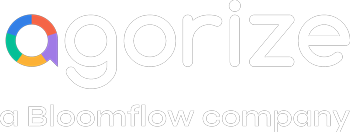With the ever-changing consumer behavior, businesses are happy to simply mimic some of its practices – using apps and smart devices. It’s a stab in the dark that’s the very opposite of a long-term successful marketing strategy. Making use of your customers’ favorite devices is not enough anymore, putting them at the center of your strategy implies you have to think with them through co-creation.
What is co-creation?
Co-creation is a collaborative marketing strategy. It consists of involving consumers in the process of creating a new product or brand slogan.
Customers are at the heart of the co-creation process. They are invited to share their ideas, their point of view, with the company. This process is part of the crowdsourcing methodology. It allows companies to innovate, stay competitive and engage with their ecosystem.
Co-creation, a solution to changing consumer behavior
For many years now, a major change in consumer behavior has been occurring, due in particular to the emergence of new technology. Over the last 10 years, consumers have become highly digitalized, using the web, adopting smartphones, and embracing mobile-connected technology. Companies have to adapt and keep consumers at the heart of their strategy by connecting with them and, therefore, co-create with them.
Increased adoption of the web and mobile technology
Still today, the number of Internet users in the world is growing every year, +7% from 2019 to 2020 according to a study by Weareasocial and its partners.
The way we manage our bank accounts, make payments of all kinds and make our everyday purchases has undergone a major transformation over the last 10 years. This new digital age and the adoption of mobile technology have led to large-scale data production – what’s known as Big Data.
Data influx and Big Data
This is the second aspect of digital transformation: learning to collect, process, and use this new and massive influx of data. According to an IBM estimate, “every day, we generate 2.5 quintillion bytes of data – so much that 90% of the data in the world today has been created in the last two years alone.”
And if you weren’t convinced of the usefulness of Big Data, maybe this figure will change your mind. According to the McKinsey Global Institute, companies that use this data at all levels of their organization increase their margins by an average of 60%. Proof of the central role that Big Data plays in your digital transformation strategy.
The new ultra-digital consumer is the cornerstone of a successful digital transformation. By learning to better understand their habits, you’ll find out where and how to capture the astronomical quantity of data they produce every day. But a successful digital transformation doesn’t happen overnight – it also means building a trust-based relationship with consumers. And to achieve this, the two watchwords are co-creation and lean innovation.
Making your digital transformation success: co-creation and lean innovation
Co-creation: the solution to digital labor?
As we’ve just seen, with the arrival of Big Data, co-creation is a reality. Firstly, consumers produce data, which is recorded by all the apps, sites, and smart devices they use on a daily basis. Businesses then use this data to improve and customize their products and services.
The issue is that more and more people are raising their voices against this passive co-creation, which is taking place without consumers’ knowledge – and some would say behind their backs. It’s what’s called digital labour: the fact that we all produce thousands of gigabytes of data, creating value for companies without receiving anything in return (such as lower prices for their sensor-packed products).
Hence why it’s so important for companies to pay attention to how they collect and use this data. What’s the solution? Engaging in comprehensive and direct collaboration with consumers. To do this, they need to be involved throughout the whole process of creating a new product or service, from the design stage to putting it on the market. This approach has three benefits:
- It lets you collect a huge amount of data from consumers, not only on how a given service is used but also on how to communicate about that service.
- It’s voluntary and therefore more ethical (it can’t be considered a form of capturing private data from the wild).
- It increases transparency. Consumers are involved from the design stage, giving businesses the opportunity to inform them what their data will be used for and how it will benefit them (better-targeted products and services that perform better).
By consistently and regularly consulting consumers, businesses can quickly develop products that meet their expectations. It’s what’s called the lean method.
By consistently and regularly consulting consumers, businesses can quickly develop products that meet their expectations. It’s what’s called the lean method.
The lean method: innovation through iteration
The concept of lean innovation comes from startups. Essentially, it means releasing a very basic product with few features as quickly as possible to get user feedback on how to improve it. The company then gradually launches versions that are increasingly close to consumers’ expectations. It prevents them from working behind closed doors for months only for the product to be a flop.
This agile method is particularly suited to businesses that want to get started with their digital transformation. It’s a way of co-creating products, services and even new ways of communicating that are in step with your consumers, meaning you can provide regular updates and improvements.
Digital transformation: consumers are at the heart of the strategy
Digital transformation isn’t so much based on technology as it is on business culture. It means listening to consumers, understanding these new behaviors and ways of communicating, and co-creating products and services with them.
If businesses simply focus their efforts on technology without trying to understand how why and how consumers use it, they’ll end up hitting a brick wall.

Involve your customers in a process of co-creation
Launch your idea box. Start collecting ideas and move them forward in your innovation funnel.










